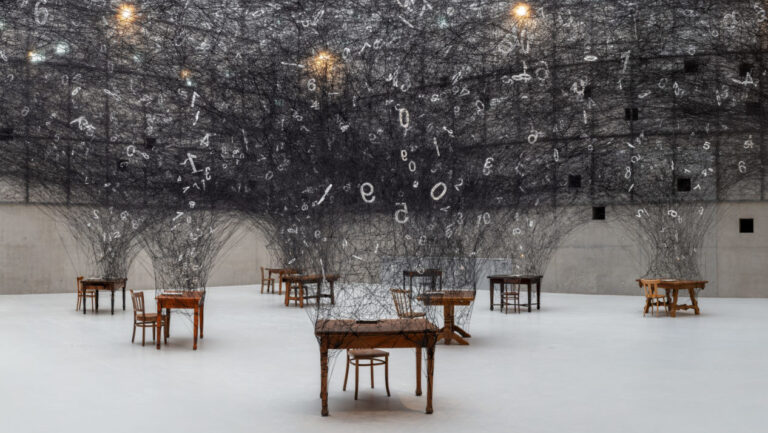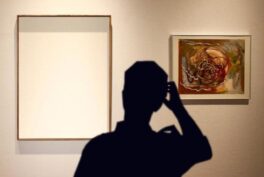Counting Memories (Sept 7, 2019 – Oct 4, 2020) is a current, site-specific, large scale installation by Chiharu Shiota at the Muzeum Śląskie (Silesian Museum) in Katowice, Poland. A striking and powerful work, we were able to get an interview with the artist.
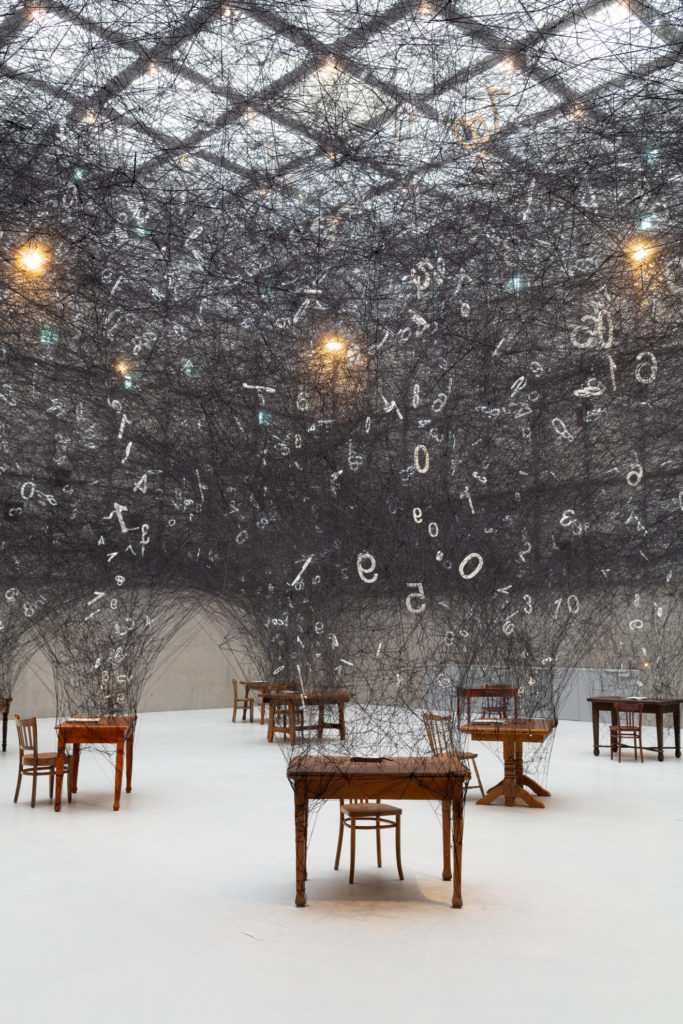
Muzeum Śląskie, Katowice, Poland. Photo: Sonia Szeląg. 2019.
Born in Osaka, Japan in 1972 Shiota is now a Berlin-based artist. She studied extensively in both countries, has participated in over 300 international exhibits, and won numerous awards. Initially she studied painting, but later shifted to performance, sculptural, and installation works.
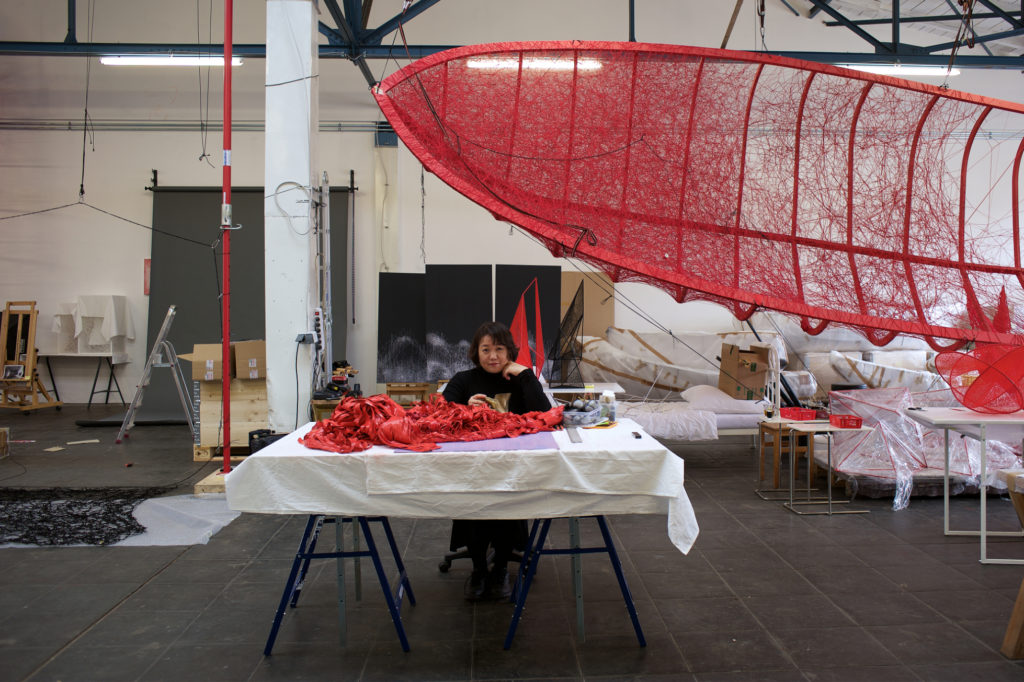
Her work touches on deep, visceral themes and emotions such as fear, memory, anxiety and fragility. Above all she is known for her immersive installations, with poetic and fervent use of meters and meters of yarn, intertwined and suspended among a variety of objects. Furthermore the yarn is key is a tool of storytelling, and here it exemplifies our connected history.
A web of black yarn engulfs the viewer upon entering the space of Counting Memories. (It used 3000 skeins of yarn with a total length of 375 km). It extends from the ceiling and then funnels down into nine wooden tables and chairs scattered throughout the room. The black yarn thus represents the night sky, cosmos, and universe. While scattered throughout are white numbers, dangling and suspended like the countless stars of the Katowice sky.
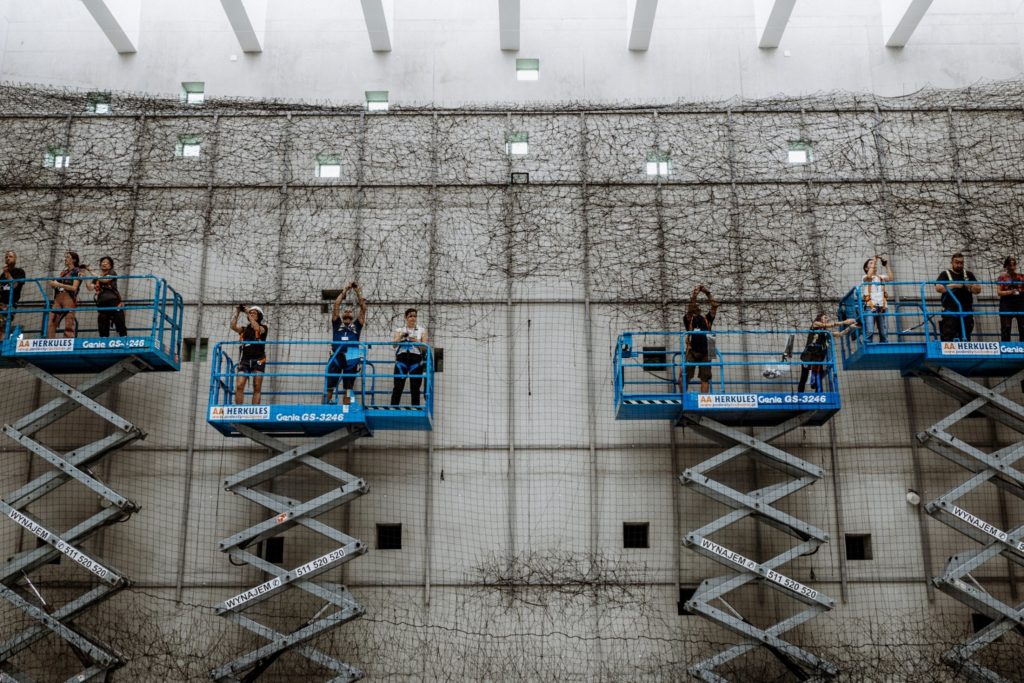
This is certainly an interactive experience. She invites visitors to sit at the desks and respond to questions written on paper for example. These questions echo the numbers floating above and as a result focus on the importance of numbers in our lives.
Which number has meaning to you and why?
Do numbers tell us who we are?
How many memories do you have?
What is the most important number?
What number defines you?
Do numbers tell the truth?
How many stars exist in the universe?
When do numbers stop making sense?
Why do memories and numbers have a connection?
What is our common denominator as people?
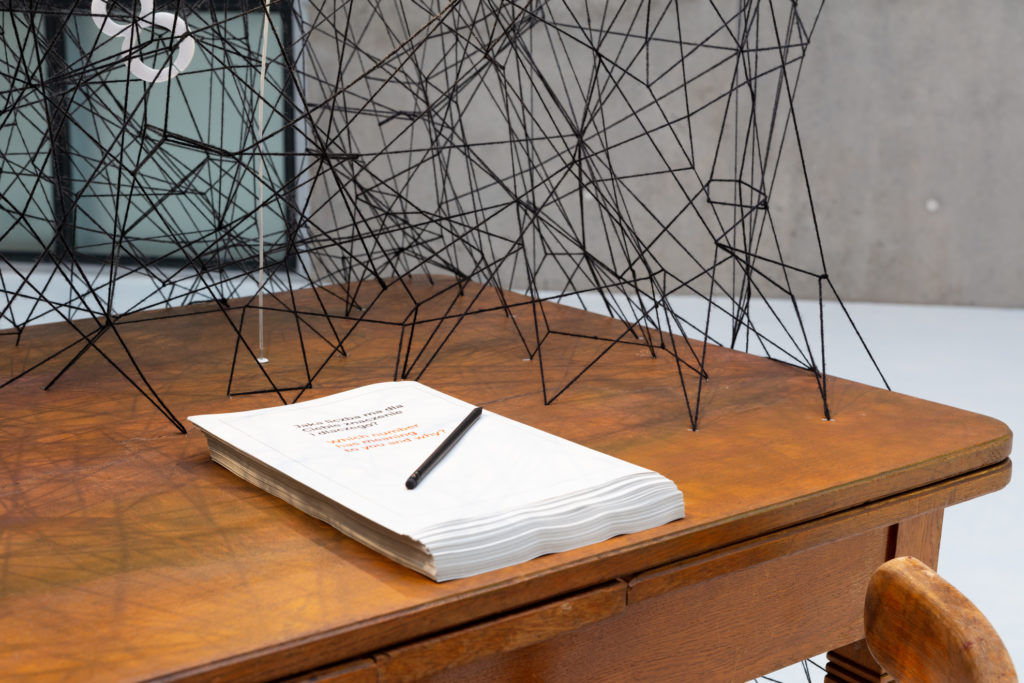
Muzeum Śląskie, Katowice, Poland. Photo: Sonia Szeląg. 2019.
Numbers really are such a pervasive part of our lives, but not something we might give much thought to. This deep contemplation and self-examination is another key element of Chiharu’s work.
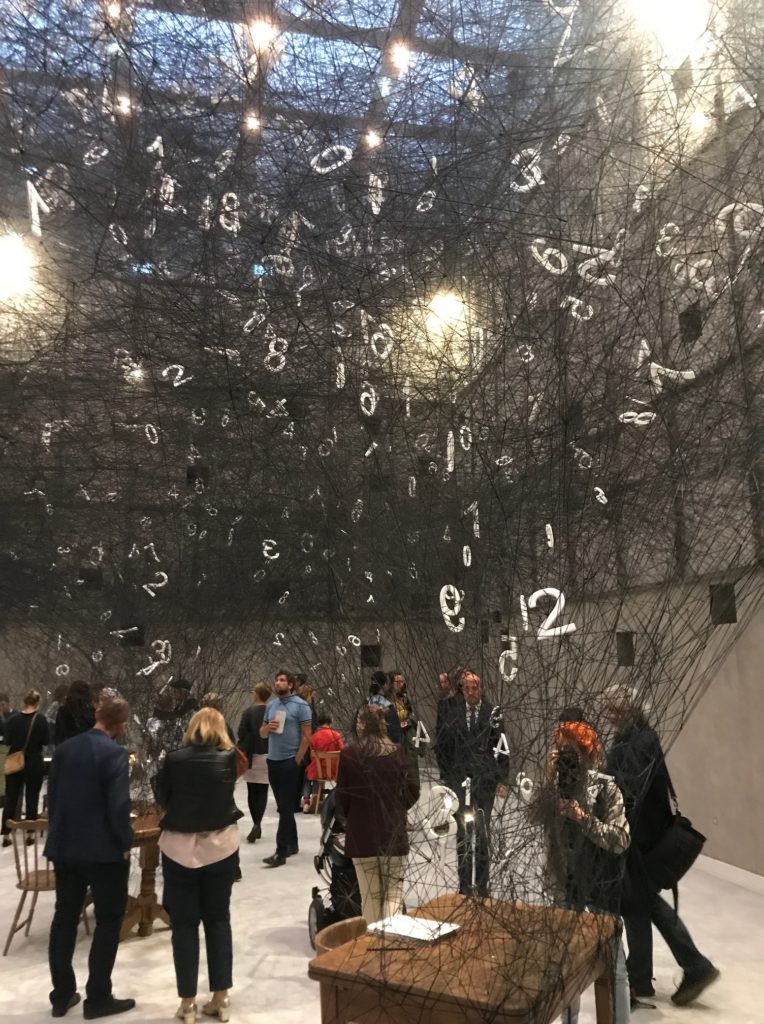
I was curious about the creative process and story behind Counting Memories, and Chiharu provided thought-provoking responses to my inquiries.
Where did the idea for Counting Memories originate from? Are there themes or patterns you work with or is each installation a creation of their own?
Usually, when I visit the exhibition space for the first time, I walk through the space and find myself transcended into another dimension. This lets me imagine an installation for the open space. When I was walking through the museum last year, I had the feeling of standing within a black space and could see many stars. I read about the history of Katowice and the coal mining industry at this place. I thought of how numbers connect all our history, also our personal history and wanted to create an installation that focuses on this. For site-specific installations there is no pattern or theme, each space has its own energy. I create something with this energy.
How did the city of Katowice influence Counting Memories?
I was inspired by the rich history of Katowice. I want to connect with my art to the viewer, and I believe that we are all connected, I wanted to create a universal organism which reflects this feeling. All our history is collected through numbers; it is something that we all have in common.
Yarn and thread are such powerful components of your work. What drew you to use it for the first time?
Originally, I wanted to become a painter but during the second year of my studies, I felt stuck. I could not continue painting because it had no meaning to me. Painting has such a rich history and I did not believe that it is part of my history. I began experimenting with other materials and my body. One day, I was sitting in bed and began weaving yarn around my room and myself. It was like drawing in the air. The black thread was like a line in a painting, and I could draw lines upon lines in a limitless space.
Your work has such a visceral and deep feelings associated with it. What impression do you hope Counting Memories will have on the viewer?
I think when the visitor first enters the room, they are surprised. They probably think about the size of the work or the material and only afterwards they will think about the meaning. In contemporary art there is not only one answer – everyone has different feelings.
Are installations carefully and precisely created or are they more free form/ organic?
It is more like a free form. It is like drawing in the air.
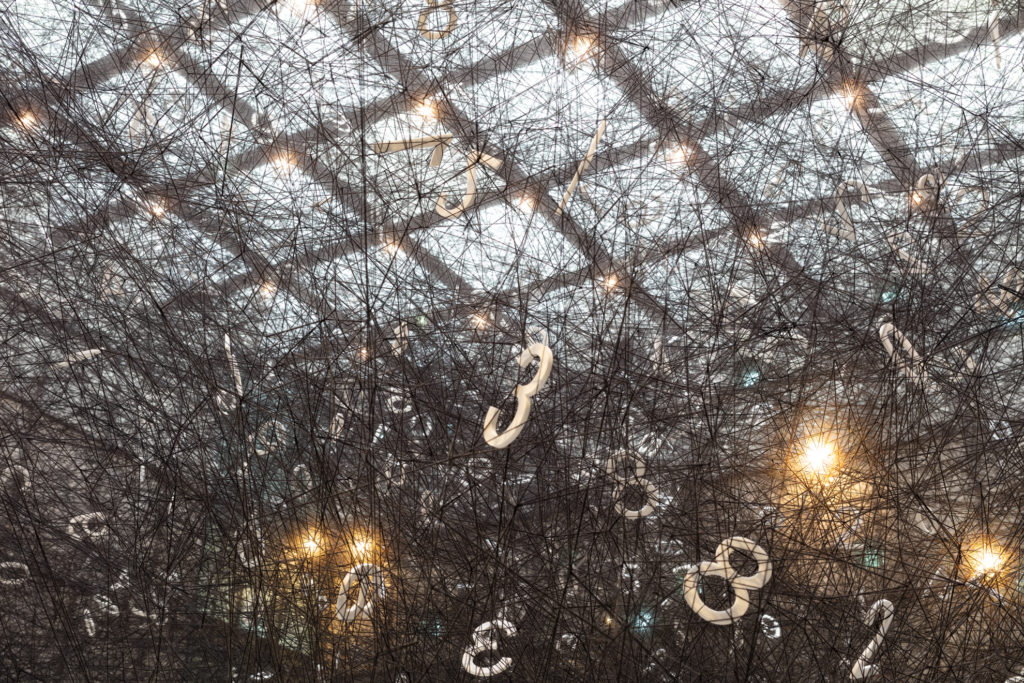
Muzeum Śląskie, Katowice, Poland. Photo: Sonia Szeląg. 2019.
The impression from Counting Memories does give the effect that Chiharu uses the air as much as the yarn, table and chairs. As a result, there is this sense of merging with and immersion in the art that exemplifies the experience of Shiota’s installations. It brings you to the edge of an existence or another world – always unraveling, exploring, sharing and going deeper into your understanding of yourself and connection with others.
Counting Memories runs through 4 October 2020 at Silesian Museum in Katowice, Poland.
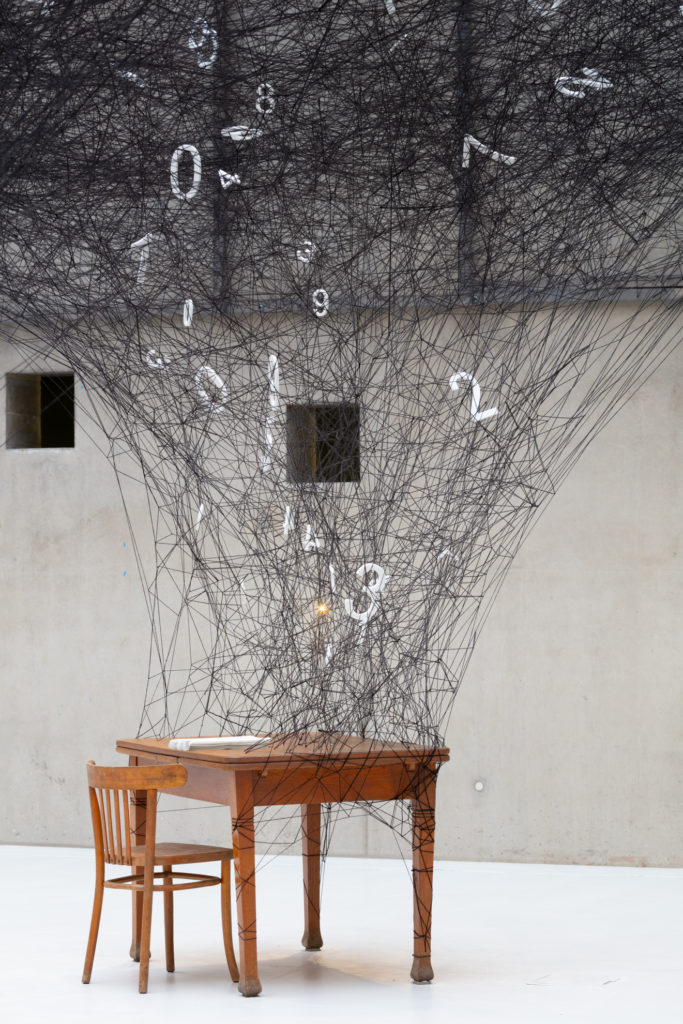
Muzeum Śląskie, Katowice, Poland. Source: Fubiz.
Artist: Chiharu Shiota
Curator: Łukasz Adamski
Atelier Chiharu Shiota: Julia Strebelow (project coordination), Rosalie Pfleger (copy editing), Euan Williams, Tomoyuki Ueno (technical coordination), Kui Soon Park, Nathan Paul Saludez, Christina Tsantekidou, Mana Urakami (execution and assembly)
Muzeum Śląskie: Aleksandra Grabowska, Dominika Lorek (technical coordination), Arkadiusz Chmieliński, Szymon Kiciński, Piotr Kopeć, Aleksandra Kubacka, Patryk Kudra, Dominik Niedziela, Izabela Petryla, Katarzyna Rachuba (execution and assembly).
© ZAPA, Warsaw, 2020 and the artist
